Is inclusion the solution? Improving the public education system
November 5, 2018
Special needs students have been a part of the educational system for an extremely long time, but even now, there is still a lack of full support for them.
There has been much struggle throughout American history for these students to get the proper education they need, and there has been some progress made, but the struggle in general has continued up to today.
These special needs students have faced many challenges in today’s world due to complications within their classrooms. These complications range from lack of funding, lack of support from teachers, to general mistreatment in schools. Proper action isn’t being taken to help these students get the equal education that they need in order to become a successful member of society.
Special needs students are students with learning disabilities that may not allow them to have the same abilities as general students (students that have a behavioral problems or physical disabilities). These students are known to not have been given equality compared to students without needs that don’t have as many, or as severe of these setbacks.
To begin with, one of the basic concepts to understand are that there are many requirements for people trying to become a special needs teacher.
This is what Norma Mejia said, an assistant teacher in The Child Center Of NY in Queens, New York, about the requirements for teachers: “Make sure that the children are in a healthy and safe environment and that they learn academically, physically, and emotionally.”
The Child Center Of NY is a daycare in Woodside, Queens. It is also a pre-school, but it is not run by the Department of Education.
Norma Mejia has been working there for about 6 years with both general and special needs students, and has talked about what a teacher’s role in a class is.
Mejia stated that it is a teacher’s responsibility to give the students a proper education, in which they stay healthy and learn physically and emotionally.
She truly believes that a teacher is the leader of the classroom and is the role model for the students. Teachers’ actions have a lasting impression on their students.
This was also something that Annika Salomonsson, a sophomore here at the NYC iSchool, agreed with: “Well because teachers are role models and to be honest, I remember things from when teachers say stuff that are just hurtful comments.”
Salomonsson strongly believes that a teacher´s words are something that have a great affect on students due to their important role in the classroom. Which is why she believes that a teacher should be someone that is very careful with their words, and is someone that acknowledges the fact that they play a big role in each of the students’ lives.
Ms. Baracaldo, a calculus teacher here in the iSchool, has also had experiences in the past that have taught her what special needs teachers need in order to be successful in educating the students.
She used to work at the Global Neighborhood Secondary School in East Harlem before it was closed in 2016 due to poor performance (she moved here to the iSchool before it closed).
One of the main reasons why she left the school was because this school had many special education classes in it, but the one thing that made her leave the school was teachers not working with the students properly.
This is how she responded to the conflict of the mistreatment of special education students.

“It’s not really a surprise to me, I witnessed it at my old school and it’s one of the reasons I left. I can’t work with people that I can’t respect”.
This is something that many teachers experience in their careers, which is that they encounter people that aren’t doing their job properly by hurting the students or leaving negative impacts on them.
This is what Ms. Baracaldo said about the proper requirements/characteristics that a teacher should have, “They need a strong content background and a background in learning differences and flexibility.”
Ms. Baracaldo added on by saying that special needs teachers really need to commit to educate special needs students, not just saying that they help them.
Ms. Klimowicz, a science teacher here in the iSchool, who recently joined the community last year, also shared her opinion on the importance of any teacher: “I think that one of the most important things is that when you’re first teaching a class, that you make sure that as many students as possible feel confident and safe in your classrooms. If those students feel they can be successful in a particular task, then when material gets harder they are more likely to seek out help because they’ve been successful in the past.”
Having all students feel included and a part of the classroom is key to engaging all students in the lesson. As a result, students retain the information, which should be the main goal of every classroom.
This article also goes to share that a teacher needs to have much background knowledge and things that they should apply to their lessons and in the way they teach in general.
They stated that using diagrams and visuals can help special needs students, and so can giving the student feedback relatively often.
These are the type of things a special needs teacher should have for starters, background knowledge, flexibility, and a motive. They need to be properly equipped to quickly change their teachings in a fashion that benefits the whole classroom as a whole so that no student should be left out or left to be confused in any lesson.
Salomonsson not only shared her opinion on special needs teacher requirements, but on what special needs teachers are missing instead: “Probably like emotional support because all teachers are trained in teaching you the academics but sometimes there’s that other side of being a teacher and a role model that they may not be as well trained on, but they might also be, it depends on the teacher.”
She believes that these teachers need to be more emotionally trained to work with special needs children. They focus so much on training on how to teach them, but may forget how to handle them emotionally, which also plays a large role in their education.
Fernando Rodriguez, another sophomore in the iSchool, also spoke on the emotional side of teachers being a key factor in the requirements/characteristics they should have.
Rodriguez explained, “I think a teacher should be able to communicate with them in a way that doesn’t come across as them being inferior to other students due to their disability. The student should feel equal and comfortable in the classroom.”
So teachers controlling their emotions in the everyday classroom with special needs students in it is very important for the students to be successful in their education.
In other words, patience and understanding people is something that every special needs teacher should have to become a successful special needs teacher. Successful in this case being teaching special needs students in a way in which they learn and benefit from it.
Norma Mejia added on to her previous statements of what a teacher´s requirements in a class are by saying that preschoolers are very sensitive for they aren’t fully developed students yet, and pre-schoolers who have special needs usually are much more sensitive.
One way that Mejia and the main teacher treats them in the classroom is by giving them equal treatment and integrates them into the class just like they would with any other student.
As stated in “Behavior and Classroom Management”, special needs teachers must treat students with special needs fairly, and in a way in which they feel as if they are part of the classroom. They must have “extra care” to plan because the students´ self-esteem is affected by how well they do in class.
This includes making a spot for them when all the children sit down. They shouldn’t be isolated but instead be surrounded by their peers so they feel as if they are being treated equally. As a result of this, these special needs students, whether in kindergarten or in 8th grade, will gain self-esteem and confidence in doing their work, as stated in (website above).
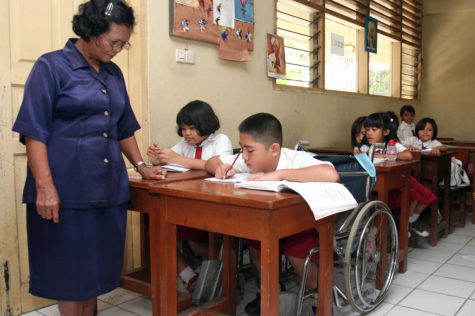
Even if teachers are supposed to receive training that allows them to conduct classrooms in these ways and keep a professional manner, some end up slipping through the cracks.
Mistreatment of special needs students isn’t surprising, but there are laws that protect them from it, such as Section 504.
Ms. Baracaldo said, “Section 504 requires recipients to provide to students with disabilities appropriate educational services designed to meet the individual needs of such students to the same extent as the needs of students without disabilities are met. An appropriate education for a student with a disability under the Section 504 regulations could consist of education in regular classrooms, education in regular classes with supplementary services, and/or special education and related services.”
According to “Protecting Students With Disabilities”, these are the main things that section 504, which is run by the Office for Civil Rights, does for the disabled or special needs in education.
The disabled or special needs students need help and protection in their education, and Section 504 provides them that, and so does IDEA (Individuals with Disabilities Education Act).
IDEA “… provides students with certain modifications or accommodations based on their abilities so that they may be able to perform in a general education classroom,” according to Ms. Figueroa, a special education teacher here in the iSchool.
It is similar to Section 504, but with the exception that it doesn’t include protection against discrimination. Instead of protecting them against much discrimination, it gives them more equal rights so that they are given equal education as others, but in the way that they learn best. It forces schools to not deny any special needs students for almost any reason.
Also, the IDEA is a law that is tied in with Section 504. For example, IDEA is used to consider a person special needs, under Section 504.
In other words, IDEA falls under Section 504 in which students are considered disabled or in need of special tools or help.
The evaluation of every student is made under section 504, and the decision of whether a student needs special needs services is also made under Section 504.
The main law that is looked at, however, when talking about discrimination against special needs students or any disabled person, is the American With Disabilities Act, which makes discrimination against any disabled person illegal, and gives them accessibility to places.
“It included little things such as accessibility. Some building where inaccessible to people that were wheelchair bound for example, they weren’t able to enter certain places because they didn’t have the means to. Other places include transportation,” said Ms. Figueroa.
Therefore, the ADA fights for giving the disabled equal opportunities in accessing buildings, using transportation, and almost anything they do publicly in their daily life.

A history teacher at the iSchool, Ms. Asher, also agrees with this act: “It’s important in terms of people who are differently abled to have the same access that everyone else has, whether its getting into buildings, being provided with educational services, being able to get on things like a plane or other types of public spaces.”
So it isn’t much of a disagreement between most people that the ADA does the right thing in giving the disabled equal opportunities in their daily lives.
She stated that the act makes it illegal to discriminate against people with disabilities.
To add on, the ADA isn’t something that only the government and society of teachers take a look at, but something that the public does to, as shown by the following image:

So the public does have some interest, and some need in being educated on what this important act is.
Nevertheless, even when laws and acts such as these are in place for most of the country, some are states and cities don’t follow them.
One example of this can be in Wisconsin, where there aren’t any funds for special needs students in private schools.
“Wisconsin students with disabilities and unique needs are sometimes unable to secure what, in their parents’ judgment, is an appropriate education at a public school. The courts and legislators have recognized that federal funds must be available for educating such students in private schools instead,” as was stated in “How Wisconsin is Failing to Help Students with Disabilities”. There aren’t any local funds for private school students that have special needs, which results in these students not receiving any of the proper materials they need to learn, such as iPads, or Smartboards.
Special needs students in Texas face a similar issue. The U.S. Department of Education gave confirmation that the Texas Education Agency didn’t give special needs students equal rights and protection against any form of discrimination for more than a decade.
Therefore, Texas wasn’t complying with any of the laws that are in the educational system to give special needs student’s equal rights and protection against any form of discrimination. Texas even had the lowest rate of giving special needs students the proper education.
Data shows that TEA (Texas Education Agency) only gave 8.5 percent of special needs students the proper education they need, when the actual national average is 13 percent.
Therefore, even if there are laws placed in the country to protect these students, there will always be some way in which state governments find a way to avoid them.
These laws spread throughout all of education of America, which means they spread to the two main classes, inclusive and non-inclusive.
According to Ms. Ryan, another special education teacher at the iSchool, inclusive classrooms that might have some or none special needs students (also called IEPs), while a self-contained classroom (special education based), only has special needs students and now general students.
Self-contained classrooms are usually for students with much more severe disabilities that may interfere in how they communicate or participate in class.
It was stated in “Masters in Special Education” that “children with very intensive needs often spend most of their day in a self-contained classroom. These children may have intellectual disability, autism, blindness, and/or multiple disabilities, including physical challenges.”
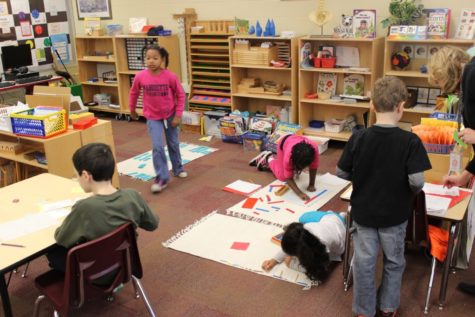
Such disadvantaging disabilities for students can have a huge impact on how they work in class, which is why having a class that is centered around students that are in similar situations as them is something beneficial, according to the article.
Inclusive classrooms, on the other hand, are the complete opposite of self-contained classrooms, since special needs students in inclusive classrooms probably don’t encounter much challenges in the way that they learn or do work. This is due to the reason that the curriculum is created to how they best learn.
“I think it depends on the student and the disability. I think for students with learning disabilities who do not have severe behavior problems, then I think inclusion is awesome, it’s the way to go.”
Ms. Ryan also agrees with these factors of severe disabled students needing self-contained classrooms, while not so severe disabled students being able to take part in inclusive classrooms where they can grow and learn much more as a learner.
In addition, another major difference between these two class types is the class sizes and formations.
Every special class has a staffing ratio, and it goes from the order of students: teacher(s): paraprofessional(s), according to Ms. Ryan. “12 to 1 to 1: 12 students, 1 teacher, and one paraprofessional. Could be 8 to 1 to 1, or 6 to 1 to 1.”
No more than 12 students are allowed in a special education classroom, but there can be less. These ratios can be 8 to 1 to 1 for example, or they can be 6 to 1 to 1.
In general, the smaller the class is in a self-contained classroom, the better. Special needs students need to have as much one on one time that they can help and smaller class sizes are why that’s better.
The staff in a self-contained classroom are there to help the students in any way they can, which is why each special needs classroom has specialists that can help a student communicate or handle their emotions properly.
Inclusive classrooms usually have one general teacher and one special needs teacher, and also one bilingual teacher in some scenarios.
Yet sometimes, these inclusive classrooms don’t have an extra person to help them, such as specialists, in their class due to under funding by the government, or by locals.
Vera Topcik, a sophomore in the iSchool, responded with this on : “I think it will play a role because special needs students need access to certain materials and access to certain things that will be able to help them make their education easier and we need to use money to get those things, we need buy those things. So we need a certain amount of money for that.”
Money from the government or from locals can be used to supply special needs students with any equipment they need that will make learning for them much more easier.
Things such as iPads are very expensive and can a points not be afforded by all schools because that device needs to be made specifically for that one student
“But that technology is sometimes built for that student, so it’s very expensive, and when a parent can’t afford, and when a school can’t afford it the student isn’t able to communicate which is a very big deal,” said Ms. Ryan.
Therefore, if a school isn’t able to afford this technology due to how expensive it is, then that special needs student may not be able to learn in the limited way they can.

As stated before, there are many states that don’t comply with the laws that protect special needs students, which results in many classrooms not being supported or taught correctly.
An example of this can be from Texas once again, since as previously stated they weren’t giving any special needs students any of the proper education that they needed.
Nancy Bailey’s “Response to Intervention’s Role in the Texas Special Education Scandal: What Are Other States Doing?” states that “In 2004, the Texas Education Agency, in what is being called the largest-scale violation of the law (PL 94-142 now IDEA) since its passage in 1975, put a cap in place that denied as many as 200,000 students special education.”
More than 200,000 students were denied the proper education that they were supposed to be provided with. This is was one of the largest violations of the law by a state in most of U.S. history, which leaves a huge impact on the future of the country and how people see it.
This can be traced back to when children are evaluated for any special education they may need. This process is called response to intervention.
In general, what Response Intervention is, is a system that serves to identify and support students that may have any setbacks in their behavior and education due to a disability or special need(s).
The problem with this system today is that it doesn’t properly identify students in need of special services at times or help them to succeed in their education career.
It was also reported in Bailey’s article that, R+I may end up not accurately measuring a student’s ability, resulting in it denying some students the special help they need.
The problem doesn’t just lie in the system, but also in society.
For example, some special needs students are mistreated and even abused just because of what they can or can’t do.
This can apply to students that can’t speak the English language. These students are at times placed in special needs classrooms because they can’t speak the language that well, but this isn’t right in any way.
Ms. Figueroa had a similar experience like this in the past: “I actually recall being younger when I came here and didn’t speak any English, and I was always being pulled out of class and put in a separate environment with other people who were just like me.”
Ms. Figueroa is from Columbia and moved to the United States at a young age, Spanish is her first language.
Just because she didn’t speak any English when she got here didn’t mean that she wasn’t able to learn equally as others. It meant that she was just learning the language, she already had the skills required to learn efficiently and appropriately in the classroom.
When you learn a language, you are learning how to understand what you already know in your language, in a new one, you’re not learning how to retain that knowledge once again.
She stated that “… just because you can’t speak the language, doesn’t me you can’t learn.”
Ms. Figueroa brings up a strong point here that the special education system can be incorrect at times by placing children who don’t speak English in special needs classrooms.
Unfortunately, labeling special needs students isn’t the only problem faced by the system. Another problem is the mistreatment of these students in and out of the classroom.
First, the definition of abuse is any form of behavior that affects a child in any way shape or form.
These people with disabilities unfortunately have a higher rate of being abused almost every day according to “Domestic Violence & People with Disabilities”.
It was also stated in an article that, “The Times reports that children with disabilities are being taken to police stations in handcuffs, held down on the floor in restraints, and sent to isolation rooms for hours.”
In addition, it is known to be a fact that these children that have disabilities have a high range of being abused, the range of them being abused is from 22 percent to 70 percent.
The percentage of these children being abused may be low, but at the same time it may be high, which is something that the system needs to ensure that it isn’t corrupt or dangerous for students.
This abuse can result emotional distress, which can lead to behavioral issues.
“Special needs students begin to think that they are too different and that may result in depression. Social isolation, and a lack of motivation,” mentioned sophomore Abida Haque.
These special needs students, however, are just being themselves in the situations in which they get mistreated. Yet some teachers aren’t properly equipped to handle them in various situations, which is why they some need more training.
Ms. Ryan commented: “I would say you have to go into it for the right reasons, there is a huge shortage of special education teachers and so many people go into special education because they can’t find a job in the subject they want, which is not the right reason because it is a hard job.”
Special education teaching has been a job with a shortage of employees for some time now, and as a result of this many people go into it simply to get a job, as Ms. Ryan said.
This can be another problem in the system, simply because people get into the job without the right intentions.
This can result in these teachers not being properly educated on how to teach special needs students because they don’t really care or they didn’t pay attention when they studied for the job.
Ms. Ryan added on by saying: “And I think in order to go into special education you have to be creative, flexible because the subjects you teach will always change, your schedule will always change, and so you constantly have to be willing to change yourself to meet the needs of whatever kids you have that year.”
Thus showing that being a special needs teacher isn’t any easy job, therefore not everyone should apply for it simply because they “can’t find a job”.
Being creative and adapting to different students isn’t an easy job, but it is the right one if people go into it with the mindset and belief that they are educating the future of America and that they deserve equal opportunities.
Teachers should also be able to adapt to not only how a students learns, but how one also emotionally behaves. This can relate back to Annika Salomonsson and Fernando Rodriguez (both sophomores in the iSchool), stating that the most important thing that a teacher should have is an emotional base in which they can use to support special needs students.
“Although the small number of children with severe emotional and behavioral disorders can and should be identified as early as possible, it is unlikely that early screening procedures will be very effective in identifying the majority of children who may develop problems of adjustment.”
As stated in the “Report of the Committee of Enquiry into the Education of Handicapped Children and Young People”, these children are usually not identified as students in need of emotional support, which is why many of them result in needing emotional help and support.
So response and intervention isn’t something that can always be useful simply because it does not accurately measure a student’s ability or emotions all the time, which is why that part of the system needs much more work so that all special needs students get a fair and proper education.
Response and intervention can also not be used appropriately because some districts and schools may discriminate against some students based on their race.
This is a problem identified by the U.S. Department of Education: “Districts and schools must not discriminate on the basis of race, color, or national origin in referring students for evaluation.”
Therefore, another major part of the problem is that there’s some discrimination against certain races when evaluating students for any special needs they may have, which is why some don’t get the proper help they need.
Moreover, the conflicts that come with the mistreatment and lack of equality for all students, including those with special needs, have become apparent through multiple examples in the past.
Adelina Cabrera, the mother of a first grader with an IEP, experienced issues regarding her son’s treatment in school.
“Even with the recommendations of a specialist, his former teachers, and speech therapists, the special ed evaluator, who worked at the school he was zoned for and whom I feel was biased towards what the school could financially provide, choose to put him in an ICT class instead of allocating funds towards a smaller sized class,” states Mrs. Cabrera.
Some students need more support, however it appears as if there are still cases where specific needs of children have not yet been met entirely in our school system. Mrs. Cabrera’s story shows this, along with some of the roles funding can play in schools when considering how special needs students are treated.
In relation, Mrs. Cabrera adds, “Because his class is newly formed and small, they did not get the same resources as other classes such as class Ipads, cubbies to put their coats/backpacks, a rug, or a smart board.”
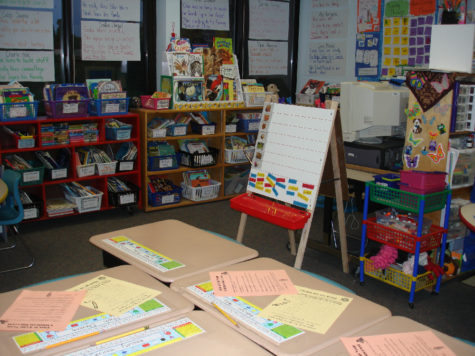
Based on this personal statement, a lot can be said about the type of support that smaller classes with special needs students may get if they are not an inclusive classroom. Overall, this seems to be a recurring issue within the public school system.
Basic services being accessible is legally required for all students, which is something to think about when analyzing the current status of our country’s education system.
In relation to this, Topcik provides another example of the problems that can occur with poor funding.
“They need more materials to make things easier for them because some students who have special needs have trouble with let’s say communicating so they need certain materials like a computer, things like those.”
As shown in Topciks statement, the overall role of funding for special education students contributes to the quality and services that get incorporated into their education experience.
In specific cases, these experiences are impacted in schools when it comes to lack of certain funding that is supposed to go towards support for them.
As previously stated, students like the son of Mrs. Cabrera are the ones who face the impact within their education due to issues that can come up.
Ruby Swords, a sophomore at the NYC iSchool who has an IEP, has heard similar stories of said issues from her mother who works in the public education system.
“My mom is an educator and she tells me all the time about kids she sees who struggle and aren’t being helped, and she can’t really do anything about it except recommend stuff to the parents even then nothing might happen.”
Swords gives a glimpse into how some issues can get ignored when it comes to their needs being met in school. Through Swords given example, even by students own parents there can be a lack of full understanding about how important it is the meet the needs of students who need extra help.
This can also indicate some broader and more general issues that are continuing to arise for special education students.
Personal examples like the ones provided earlier can provide evidence for the amount of improvement still left for our country’s education system.
As previously proven, continuing to ignore these many examples of issues within the treatment of special needs students can affect the development of the country’s education system in the future.
Potentially, based on what is known already about issues regarding some issues within special education students learning environments, the issues have the ability to worsen later on.
If this were to occur, it could make learning even more difficult for those who have special needs when they are learning new material.
“A lot of the reasons that kids get left behind, for example, the school to prison pipeline. Things like that are because people have needs that aren’t being met,” Swords adds.
In accordance to what Swords mentioned, the school to prison pipeline is the tendency for young adults who have disadvantaged background to be incarcerated due to harsh school conditions growing up.
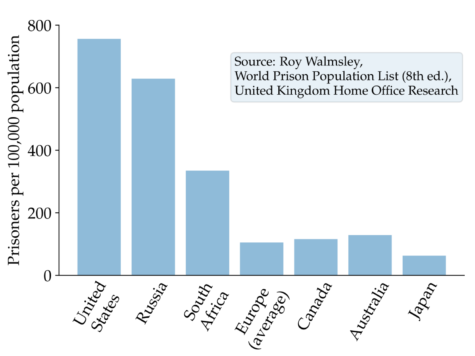
Keeping this in mind, it is hard to ignore issues within the education system, especially when they seem to keep repeating themselves through various real life examples.
Although some people are experiencing and observing mistreatment of special education students to this day, more light on the issue might be a quicker way to get society to pay attention to all of the issues within what is still happening.
“I think funding plays a huge role because you need to hire teachers that are equipped and prepared to work with special education students,” adds Maggie Kearns, a sophomore at the NYC iSchool.
With repeating examples of what needs to be resolved, these issues within funding become more and more apparent, which is something that society should consider within their analysis of the current education system.
Additionally, sometimes some of the issues can come with the teachers in schools who get hired. This issue can also be a part of the funding issue, considering some schools might not be able to afford the best teachers.
Or, this issue can be seen as a problem within how schools pay attention to who their special needs students are being looked after.
According to “PacificStandard,” a young man with autism named Adam who joined the AdvoServ school in Florida, was restrained an apparent 44 times in the span of two months.
This example can show how some parts of the treatment towards special needs students can still be improve to a more equal level.
If not, there’s the possibility that the educational support for these students may not entirely improve in the future. Considering how these issues keep appearing, the time to do something about what is happening, is now.
“If we help them so everything would be equalized, it would improve the jobs that mentally disabled people can get, the life that they can have. Lots of people with disabilities, especially learning disabilities, they can’t get jobs, they end up living in poverty, they end up homeless,” claims Swords.
Improving conditions now for everyone has the potential to create more benefit for public education in the future and for society in the future.
Providing students with a better education can give them a opportunity at jobs that would have a positive impact on the economy, while also improving the lives of those who often don’t get an equal chance out in the real world.
Being prepared for the real world starts with education at a younger age. School is the first exposure that young people get when it comes to gaining experiences and learning new information to take with them as they grow up.
Special needs students being provided with chances to seek full support in school could fix some current public education issues. This would happen if society can recognize the help that they still need.
In return, fixing issues from the bottom up and starting with issues with schools would later improve society as a whole. Due to things such as legal protections, which can having positive impacts on learning environments depending on what they are legally supporting, this idea could become a reality.
“I think that we have improve in leaps and bounds. However I don’t think that special ed being better than it was in the 40s is a bragging point and I think that it still needs work,” suggests Lucy Gunderson, a sophomore at the NYC iSchool, in regards to how special education conditions have improved so far.
Gunderson helps makes a point about the improvement for special education students in the future, clear. This is something that still has to be worked on, especially when trying to achieve a more equal level with all students in the public education system.
In correspondence with Gunderson’s claim, Paulina Dunn, a sophomore at the NYC iSchool, states, “Because of certain laws passed I think that treatment has improved, along with understanding of those with special needs but there’s still room for improvement.”
Although there has been protection legally set up for special education students, that does not disqualify any further change happening in the future. There are still many things that contribute to what is making the education system appear less strong than it could be.
In addition, according to CNN, a 5 year old African American boy in Georgia was suspended by his belt at the top of a blackboard by his female teacher. His principal found him in this state.
Apparently, this was not the first time he was punished in this way. This boy was a part of a special education program at his school, which brings light back to the idea that there is still a lack in full protection and support for special needs students in school.
Not only can there sometimes be a lack of physical protection, legal support, financial support and educational support, there can also even be a lack of emotional support for students.
When this occurs, it becomes clear that there can be various lasting psychological effects on certain students who are mistreated.
“If you constantly hear words like that you’re slow, those people will perceive themselves themselves as something negative,” explains Kristen Brown, a science teacher at the NYC iSchool.
Although words may seem to just be words, they can have a direct affect the emotional and mental state of students who might already be struggling. This is similar to the previous claims made by Salomonsson about the effects words can have on students.
Adding to this, Baracaldo agrees, “It greatly affects how they think of themselves, academically and socially. Words are powerful.”
Thus, the effects of words can ruin the full success of special needs students in school. With many other factors already seeming to be contributing to an unequal education, more mistreatment would be too much for those who have a hard enough time already.
Children with disabilities are maltreated at 1.7 times the rate in comparison to children without disabilities. This illustrates that students with special needs, who need more support anyways, are being given more negative reinforcement than students without special needs.
Realistically, based on these statistics, people can get a sense of how mistreatment could have a large cognitive impact on special needs students.
“Having low expectations affects the students psychologically, they stop believing in themselves,” adds Brown.
In other words, students who are faced with constant pressure upon them or negative reinforcement, both socially and academically, will not get the chance to work to their best ability due to the already low expectations they have for themselves.
Constantly having a barrier in the way of a successful and equal education can contribute to the remaining issues for special needs students in the public education system.
“I feel that it is kind of something that will stick with you if it’s someone you look up to and even if you don’t look up to them it is such a big part of your life since you go to school everyday and it’s the person you see when you walk into the classroom everyday,” exclaims Salomonsson.
Salomonsson brings attention to the point about the impact that an environment can have on students learning, especially when they have special needs that should be met. Anything else besides this positive reinforcement could be harmful to special needs students chances of equally learning.
11 percent of all child abuse victims in 2009 had physical, mental or behavioral issues, therefore leading us to think about the impact this can have within special needs students with the way they can be treated sometimes.
Although this statistic is set from around 9 years ago, mistreatment still has the same lasting effects on those who have experienced it.
Paulina Dunn, a sophomore at NYC iSchool, mentions, “I hope that the education system can improve, its easier said than done, but it’s not difficult to incorporate people of different needs in different classrooms.”
Mistreatment or lack of attention on issues special needs students face can create a poor reflection on the way our country runs our education system as a whole.
Children with disabilities are two times as likely to be victims to abuse than children without disabilities. This can lead to issues with anxiety and a range of social phobias.
Barriers such as anxiety and social phobias fed out of the effects of mistreatment can then go on to making learning in certain environments even more difficult than they originally were.
According to a large survey done in 2012, over 60 percent of family members felt that their disabled family were mistreated at some point.
The education system would have to fix these issues in order to see a more successful and evenly ran public education system, which can be supportive for students of all abilities.
“The main problem (like I said) is that special education students are not being given the tools and services they need in order to succeed and actually learn in school,” suggests Marisa Luft, a sophomore at the NYC iSchool.
Due to this, we see that in some cases students are not able to learn to their best of their ability. Thus, leading to even more problems for special needs students when they are put into the real world.
There are approximately two well known solutions that if done right, can improve conditions for special needs children who experience an unequal education due to the lack of full support for their special needs.
Often, these two solutions are debated over due to the pros and cons between both of them. The solutions would be self-contained and separate, smaller classrooms versus integrated and inclusive classrooms.
When considering the pros of special needs students being in a separate classroom from general students, Ms. Ryan stated, “I think it’s not for students that have such as severe disability that they can’t interact with the class in an appropriate way, and it doesn’t really end up benefiting either the general ed students or the special education students.”
It is important to consider that all students are different, however there can be benefits from students being able to get more attention and support in a smaller and more contained environment.
“I think as a kid with special needs, its sometimes helpful to be in a classroom with only other kids with special needs because you feel more relaxed. It’s smaller, so it’s less chaotic and less distracting in a smaller classroom, and you get more direct and individual attention,” claims Swords.
According to Swords, there is less tension due the ability to receive extra help as a special needs student in a class meant to directly target issues that special students may face in school.
“Smaller classes provide more opportunities for growth. There’s less distractions and more attention from the teacher on the student’s needs,” claims Mrs. Cabrera.
This kind of growth that can come out of students when they are given more attention in smaller classes, is something to consider when you are thinking about the pros and cons of smaller and more ability separate classrooms.
In addition, self-contained classrooms generally work more efficiently over inclusive classrooms because teachers have been specifically trained in order to care for students who have certain needs.
Sometimes, if there is a special needs student or disabled student who needs extra help in an inclusive class, a teacher can feel frustrated and helpless if they are not properly trained with knowledge to help that student.
Despite some of the frustration that can come from teachers, some still get the job despite it being visible they are not qualified to work with all kinds of students.
Rodriguez states, “I think that teachers who are not qualified receive the job anyways because of how few teachers there are that are trained to do so.”
Especially when it comes to teachers who are going to be teaching inclusive classrooms, this can be an issue when you think about the levels of extra support that some students might need due to their special needs.
“When there is a high demand for teachers who are able to provide such help overshadows the few numbers of teachers available, I think schools just higher whoever is most fit among the unqualified teachers available, doing a disservice to the child, and the family of the child,” Rodriguez then adds.
Instead of going for teachers who seem to be the most qualified, in order to fix the education system we must target the goal of getting teachers who are completely qualified to meet the needs of all students, especially those with special needs.
“I would imagine that teachers who aren’t specifically trained can sometimes be insensitive or not helpful for students with special needs,” Ada Cowan, a sophomore at NYC iSchool, contributes.
These student statements show the importance of teacher quality, especially those who know they will be teaching an inclusive classroom. They will have to know how to provide full support for both general students and those with special needs.
“When there are other students in a classroom with IEPs I work the best because we can all work to make sure that we get the proper accommodations. However it is best when there is an adult there to make sure we get those accommodations,” claims Gunderson.
It is clear that extra attention for students from teachers who know exactly what they are doing can have a large amount of benefit for those students.
“It seems like there are more special education programs available. I would imagine that in the past there weren’t many good programs to be put on track for students with special needs,” states Cowan.

Highlighting the self-contained programs where students get more individual time with teachers within the education system can support special needs students in a more efficient manner.
“Unfortunately, the way education has been set up is that we are a very industrialized system. A lot of classrooms are set up with rows and desks that face in a certain direction, and everyone is kind of forced to learn the same way,” mentioned Klimowicz.
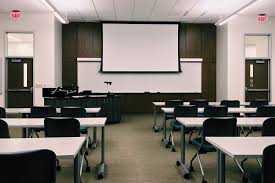
Therefore, there are going to be situations in which students will just generally learn better when they are not forced to follow the same learning routines that are done in inclusive classrooms, considering that they might not learn as comfortably due to their special needs.
“But that’s not how the world works. If that was how the world works then everyone would have the same job at the end of the day,” Klimowicz adds.
Sometimes the more beneficial way of getting special need students to have an equal education may require the chance of giving them more opportunities to do their own thing that can help them as an individual.
“It’s important for teachers to understand that everybody has individual needs, despite if they have special needs or not, and that those needs have to be met in a certain way in order to maintain a way for their students to learn,” Dunn explains.
Based on this, society can think about the effects that the school system and teachers can have on students who have special needs.
Individual needs should be considered when it comes to providing those services and opportunities for students who learn differently from others.
However, sometimes inclusive classrooms can make this more difficult because there is less individual time with teachers and the class is usually expected to learn the same way.
Based on this, it is also arguable to think about individual needs being fulfilled to a better state when in a class where you get more attention and get to work at a pace and space that might not be hectic as an inclusive classroom may be.
“Having integrated classrooms is very hard because neurotypical students and students with disabilities have different needs and services that they require,” Luft claims.
Everyone’s abilities vary, depending on their disability or the special needs they have that must be met in order for them to effectively learn.
The mainstream of presenting inclusive classrooms as the most beneficial option for all students who need extra help has not yet been proven, so we can’t completely disregard smaller classes as helpful for special needs students.
There are still recurring issues with mistreatment and a lack of total equity towards special needs students, especially in schools, which is the place that is supposed to be preparing these students to face the real world.
2,327 kids were denied in 2013 into a home district school, or a transfer because they are special ed, which is a 42% denial rate.
Therefore, if society can can fix these issues with something as simple as having many special education programs specifically for special needs students, the education system shouldn’t have to run into these issues.
On the other hand, small and more personalized classes cost more and can get rid of social opportunities which can be factors that lead to people seeing inclusive classrooms as a better solution.
Eventually, this leads to people to believing that inclusive classrooms are a more beneficial solution to helping students who have special needs.
“There are some downsides to our son not been in an inclusive class, like not being with his peers,” states Astolfo Cabrera, the son of the same special needs student mentioned previously.
In response to being in inclusive classrooms, special needs students are able to have a more joined experience socially, which is seen as good exposure to the real world outside of school.
“I was kind of sad at first cause I wanted him to be with his peers,” adds Mr. Cabrera.
It is important to consider social aspects when looking at the pros and cons of an inclusive classroom, along with educational and emotional aspects.
Inclusive classrooms can been seen as a solution towards having classrooms that seem more restricted and isolated in an unequal way. It helps maintain equity throughout schools.
“I think that it is so important that schools have inclusive classrooms and that students should be treated equally with the same respect,” states sophomore Lauren Cichon.
It is clear that equity is a very important factor when considering how inclusive classrooms can benefit those who have special needs, which is something to consider when thinking about which kind of classroom might be of more support for certain students.
In contrast from some public schools, this is something that a Charter school in New Orleans has considered when they have arranged both their school rules and who they accept into their school.
At this school, named the Noble Minds Institute for Whole Child Learning, they take into consideration the kind of environment needed to have a safe and beneficial inclusive space for learning.
This school offers therapy, yoga and emotional support classes along with normal inclusive core classes in order to add a range of support systems for special needs students.
Already, about 16 percent of the schools students are special education students, while the citywide average is slightly below that at 13 percent.
If this can be implemented in all inclusive classrooms, along with help socially, emotional support can help strengthen the environment when classes are merged between general education and those with special needs.
As previously mentioned, schools who run their schools with this kind of mindset that considers students with special needs, are contributing to the protections from the IDEA. This is also something to consider when thinking about the role inclusive classes play in schools.
“This law allows students, regardless of their abilities, the opportunity to be in a classroom with other students who don’t have disabilities,” Figueroa contributes.
While looking at the pros and cons of inclusive classrooms, this is something to consider when considering how laws play a role in making sure there is equity for special needs and disabled students in a educational environment.
Klimowicz mentions, “Classrooms are social spaces so I think it’s important to have different kinds of learners in a classroom because they can all bring something unique and different to something such as a class discussion or project.”
Inclusive classrooms can be beneficial socially and show equity in school while also teaching those how to respect and work with people of all different abilities and work styles. This is very important when students are taken out of a classroom and put into the real world.
“The students who don’t need the extra support can help the students who may need it,” states Cichon, who makes a valid point about the benefits that can come from inclusive classrooms.
Experiences are an effective way to get people, especially young students, to acknowledge that there are people of all different abilities in the real world.
“School is all about exposure. I believe there is something to learn from anyone and whether or not that person is special needs or not does not change my opinion,” Haque contributes.
Inclusive classrooms are a way to provide both equity and social opportunities for special needs students, which is often why people think it is a more effective method in comparison to smaller and more separate learning spaces.
Additionally, when classrooms are inclusive teachers can learn to gain the skills that help them work with special needs students. Experience is an effective approach toward exposure to understanding that there are some students who just learn differently, whether they have special needs or not.
However, at the end of the day, whether people with inclusive classrooms or smaller classrooms being more effective for special needs students, it is clear that equal and fair education is something that society needs to work on as a whole.
Despite any differences students might have regarding the way that they learn or take in information, it is a part of the law that they receive services to get them a more fair education.
It is up to people to recognize the underlying issues, and build off of them with solutions in order to create a more equal and efficient society.
Supporting one another in school, especially those who can sometimes have less support in general when it comes to an educational environment, can have positive effects on the way that people learn. This would be better than the effects of negative criticism on students who already have a hard time in school.
Thus, it is clear that no matter what approach we take, whether it’s inclusive classrooms or smaller and more one on one classes, something must be done to improve the learning conditions for special needs students across the country.


